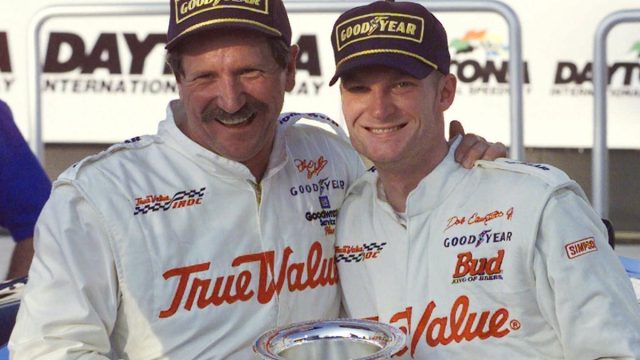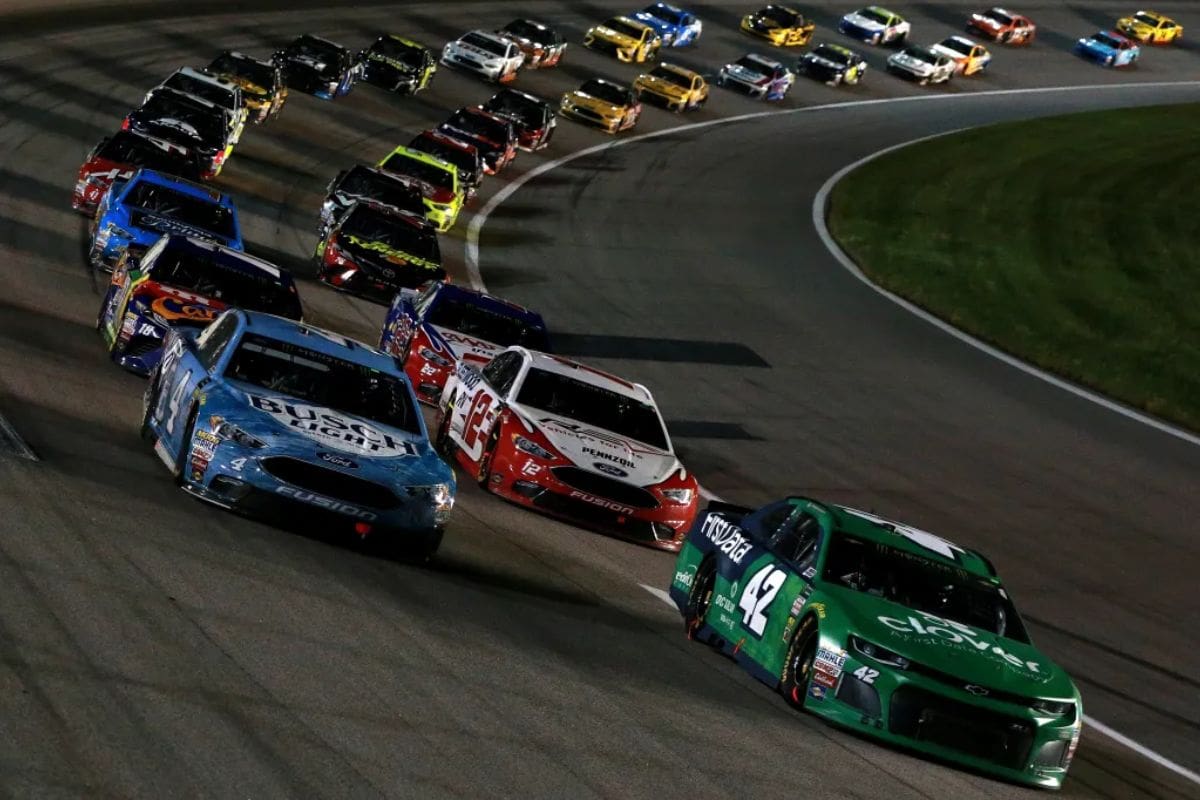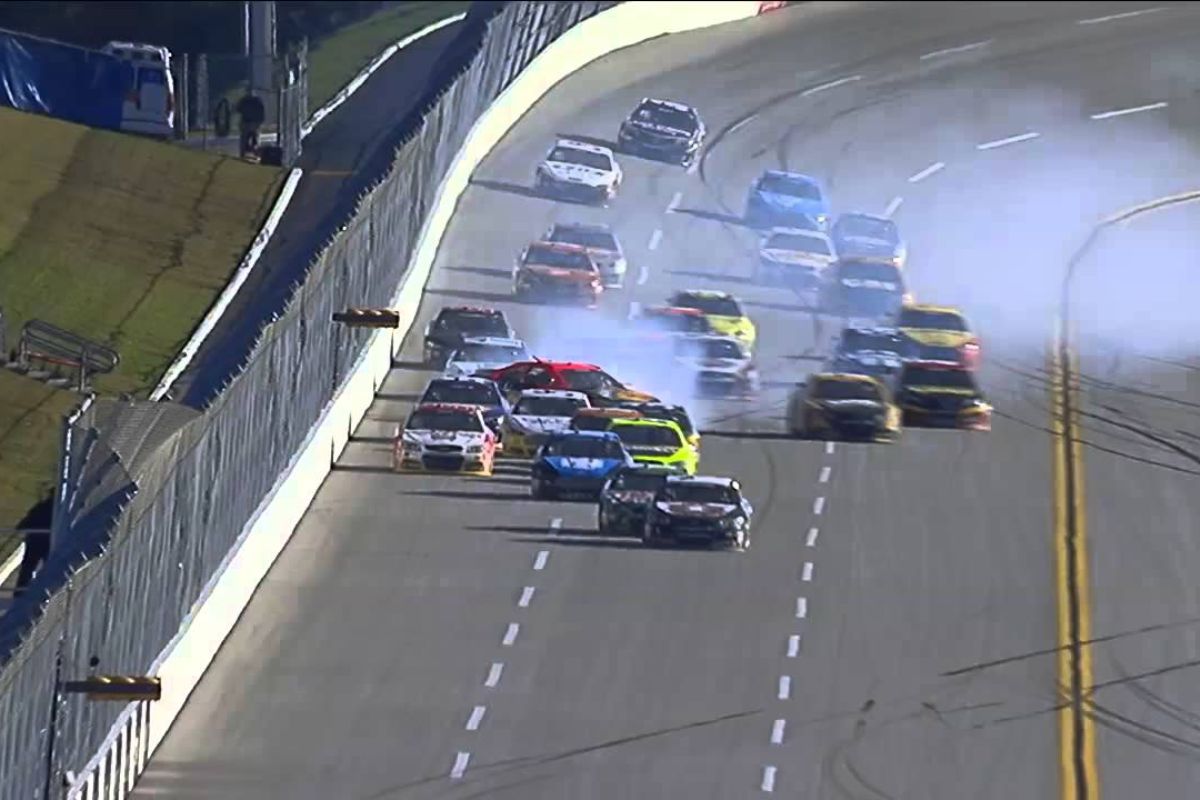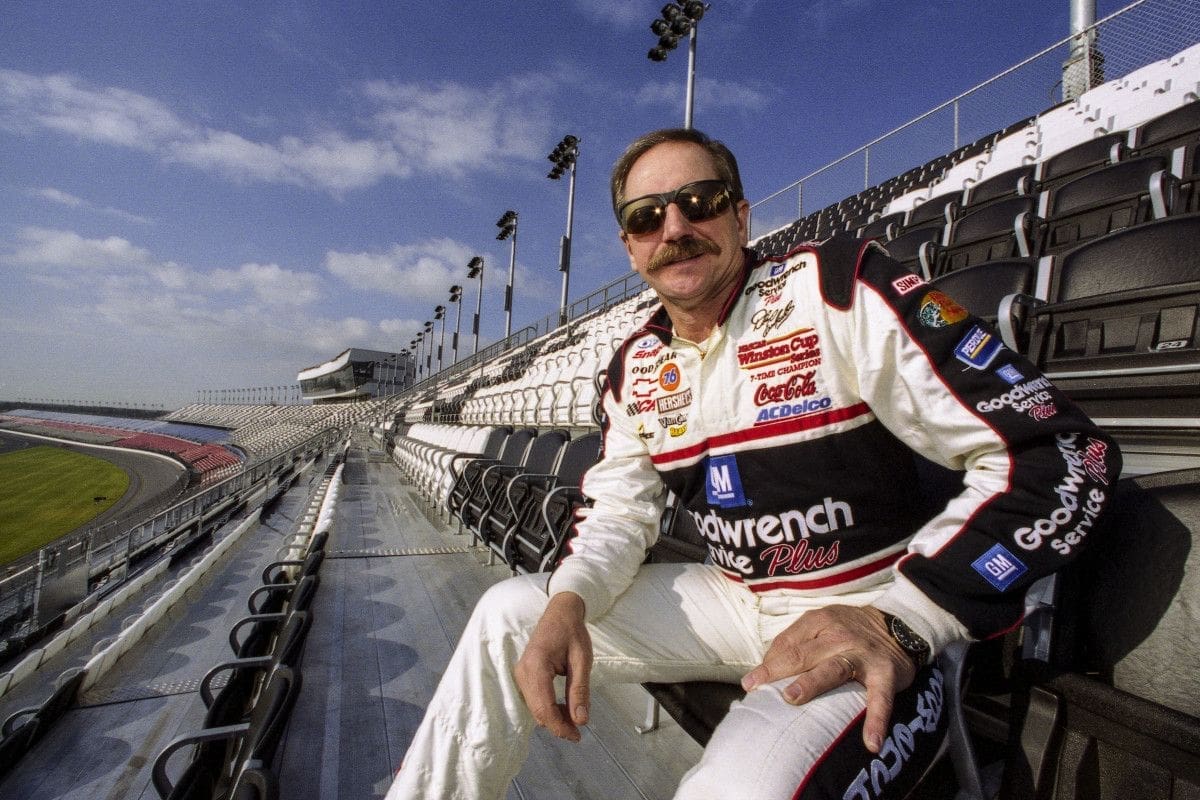Dale Earnhardt’s Near-Death Experience: Dale Earnhardt Jr.‘s recounting of his father’s near-fatal incident serves as a reminder of the nature of NASCAR racing. The vivid imagery of Dale Earnhardt Sr. emerging ‘bloody and face full of glass’ highlights the immediate physical dangers faced by drivers and opens up a broader conversation about the emotional and psychological consequences of such experiences on families within the sport. This moment invites us to reflect on the evolution of safety protocols in racing and how these incidents can reshape perceptions of risk and resilience in racing environments.
Key Highlights
- Dale Jr. recounted a traumatic incident where his father, Dale Earnhardt, suffered severe injuries, leaving him with a ‘bloody and face full of glass.’
- The incident highlighted the inherent dangers of NASCAR racing and the psychological impact on family members witnessing such close calls.
- Earnhardt’s aggressive driving style often led to dangerous situations, showcasing the risks faced by drivers during high-stakes competitions.
- Dale Jr.’s reflections on his father’s near-death experiences underline the emotional toll and resilience required in motorsport environments.
The Heartbreaking Moment of 2001 Daytona 500
The tragic events of the 2001 Daytona 500 serve as a reminder of the inherent dangers of motorsport, culminating in the untimely death of Dale Earnhardt, a figure synonymous with the legacy of NASCAR. On that fateful day, Earnhardt was engaged in a battle for supremacy, vying for a second Daytona 500 victory against fellow competitor Ken Schrader. The race, filled with elevated stakes and intense rivalries, reached a devastating climax on the final lap when a collision occurred, resulting in a crash that claimed Earnhardt’s life.
The aftermath of this incident reverberated throughout the motorsport community, highlighting the nature of stock car racing. Dale Earnhardt’s death not only marked the loss of a champion but also catalyzed notable changes in safety regulations within NASCAR. The impact of the crash emphasized the urgent need for advancements in vehicle safety and driver protection, prompting the implementation of the HANS device and other critical safety features.
Moreover, this tragedy compelled a reevaluation of race protocols, emphasizing the necessity of thorough medical oversight at events. Earnhardt’s legacy, characterized by his tenacity and competitive spirit, is now inseparably linked to the imperative of ensuring driver safety.
When Dale Earnhardt Sr. Cheated Death
Throughout his career, Dale Earnhardt Sr. exhibited an uncanny ability to navigate the treacherous landscape of NASCAR, often emerging unscathed from situations that would have spelled disaster for lesser drivers. His fearless driving style, often characterized as reckless, earned him the moniker ‘The Intimidator,’ a title that both captivated fans and instilled trepidation in his competitors.
However, one of the most compelling narratives surrounding Earnhardt is the time he seemingly cheated death during a harrowing incident on the racetrack. In the annals of NASCAR history, few moments are as electrifying as the infamous ‘Pass in the Grass‘ during the 1987 Winston Cup. While the tactic displayed his audacity, it also highlighted the fine line between daring and danger.
Yet, it was not just the victories that defined his legacy; it was the near-catastrophes that tested his mettle. On one occasion, Earnhardt faced a catastrophic crash that could have ended not only his race but his life. The aftermath was a visceral reminder of the sport’s inherent risks; he emerged battered but resolute, a proof of his indomitable spirit.
The Talladega 500 Race of July 1985
Dale Earnhardt’s harrowing experience during the Talladega 500 race of July 1985 serves as a poignant reminder of the fine line between skillful tactics and life-threatening peril in NASCAR. On that fateful day, a catastrophic failure in a competitor’s vehicle released a driveshaft that became an airborne projectile, penetrating Earnhardt’s windshield. This incident was not merely an accident; it highlighted the inherent risks that drivers face, pushing the boundaries of human endurance and mechanical reliability.
Despite the horrifying nature of the event, Earnhardt displayed remarkable resilience. He managed to finish the race in 24th place, a reflection of his resolve. His son, Dale Jr., recounted that his father’s car bore the scars of this narrow escape, with the driveshaft still lodged in the floorboard during a post-race inspection. The visceral imagery of a ‘bloody and face full of glass’ encapsulated not only the physical toll but also the psychological fortitude required in such high-stakes environments.
“I went to the shop the next week and saw the car, and the driveshaft that went through it was still in the floorboard.” – jr
I went to the shop the next week and saw the car, and the driveshaft that went through it was still in the floorboard. The entire driveshaft came out of one car… was kicked into the air by another… and struck dad's roof… sending half of it over the car and the other half… https://t.co/4FmoyY8vAr
— Dale Earnhardt Jr. (@DaleJr) July 29, 2024
“The entire driveshaft came out of one car… was kicked into the air by another… and struck dad’s roof… sending half of it over the car and the other half through the windshield. Dad was on tough dude, bloody and face full of glass. I don’t think there was a driver any tougher but I know in those days they all had to be tough. RCR would end up getting to the finish line somehow that day.” – jr
The Talladega 500 stands as a pivotal moment in Earnhardt’s storied career, showing the grit necessary for survival in NASCAR. As competitors navigate the treacherous dance of speed and strategy, incidents like this remind us of the fragility of life within the sport. Ultimately, Earnhardt’s experience at Talladega reinforced the notion that while skill is paramount, it is often the unyielding spirit of the driver that truly defines their legacy.
Other Close Calls with Death
Numerous instances throughout Dale Earnhardt’s career demonstrate a pattern of close encounters with death, showing both his relentless tenacity and the perilous nature of high-speed racing.
One notable episode occurred during the 1997 Daytona 500, where Earnhardt’s car flipped violently, necessitating an ambulance for his immediate care. Remarkably, he returned to the track after a brief commercial break, emphasizing his almost superhuman resolve to compete.
Another striking example of his audacity transpired in 1986 when Earnhardt, unfazed by the chaos of racing, climbed out of his car mid-race to clear mud from his windshield. This act not only highlights his exceptional focus and resolve but also reflects a certain recklessness that defined his racing persona. Such incidents reveal the duality of Earnhardt’s character: a champion willing to risk everything for the sake of competition while simultaneously courting danger in a sport notoriously fraught with peril.
These close calls with death serve as a confirmation of the inherent risks of NASCAR and the extraordinary mindset of its competitors. Earnhardt’s experiences demonstrate a complex relationship with mortality, where the thrill of the race eclipsed the potential for catastrophic consequences.
NASCAR’s Reaction to Earnhardt’s Wildness
The reaction of NASCAR to Earnhardt’s audacious driving style exemplifies the delicate balance the sport must maintain between encouraging aggressive competition and ensuring the safety of its drivers. Earnhardt, known as ‘The Intimidator,’ pushed the envelope of acceptable racing behavior, often leading to incidents that blurred the lines between competitive spirit and recklessness. This was vividly demonstrated during the 1986 Miller’s 400, where his aggressive tactics resulted in a notable collision with Darrell Waltrip, prompting NASCAR to impose a $5,000 fine and a $10,000 bond.
NASCAR’s response, articulated by former VP of competition Bill Gazaway, emphasized the organization’s commitment to preserving the sport’s integrity. Gazaway’s assertion of a “fine line between hard racing and reckless driving” highlights the challenges NASCAR faces in regulating driver conduct. While the sport thrives on its thrilling.
“There is a fine line between hard racing and reckless driving, and Earnhardt clearly stepped over that line Sunday. We simply cannot tolerate or condone such actions. We must preserve the integrity of our sport.” – Gazaway
Dale Earnhardt Sr.’s reaction to the penalties further complicates this narrative. He acknowledged an error in judgment yet rejected the notion of intentional recklessness, framing the incident as an unfortunate accident. This perspective invites a broader discussion about the subjective nature of racing ethics and the interpretation of aggressive driving.
“I misjudged the distance between the cars. I turned him sideways. It’s my fault. I’m not denying that. I made a mistake and hit him. But I don’t think I’m guilty of reckless driving or wrecking somebody purposely. It was an accident.” – Earnhardt
Ultimately, NASCAR’s reaction to Earnhardt’s wildness reflects a larger dilemma in motorsport: balancing the allure of high-octane competition with the imperative for safety. As the sport evolves, the lessons learned from Earnhardt’s legacy continue to shape policies and perceptions within NASCAR.
News in Brief: Dale Earnhardt’s Near-Death Experience
The near-fatal incidents recounted by Dale Earnhardt Jr. serve as poignant reminders of the inherent dangers within NASCAR racing.
The emotional and physical ramifications of such experiences extend beyond the racetrack, influencing safety protocols and shaping the perspectives of future generations of drivers.
Ultimately, these harrowing moments highlight the necessity for continuous improvements in safety measures, ensuring that the legacy of resilience and caution prevails in the high-stakes environment of motorsport.
ALSO READ: Dale Earnhardt Jr. Reflects on Dale Earnhardt Sr.’s Resilience in Hard Times



